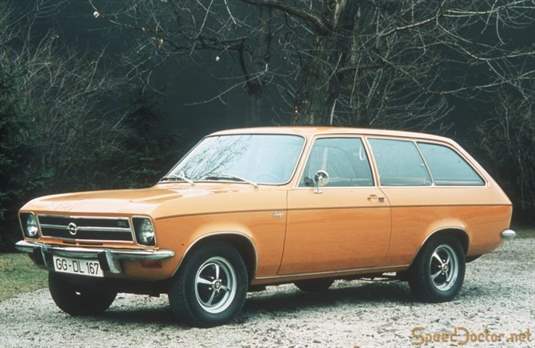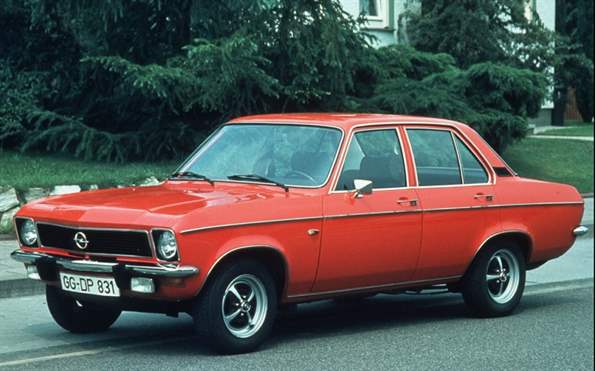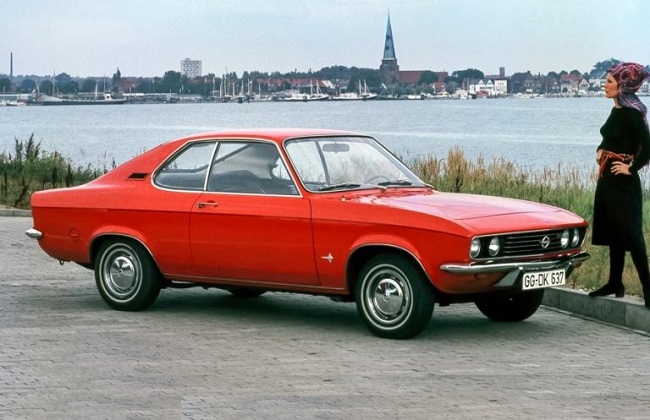The Opel Ascona was initially developed as the Kadett C. But at the beginning of 1970, the Opel Kadett B, five years after its introduction, sold so well (the Kadett A lasted from 1962 to 1965) that Opel decided to extend its life until 1973.
They decided to position the newly developed model half a class higher, as a separate model, which will be named after the famous Swiss resort. In the first generation, it was made as a sedan with two and four doors and a three-door station wagon, while the coupe version became a separate model under the name Manta. The classic front-engine, rear-wheel-drive concept was taken from the successful Opel Kadett B model, as was the motorization.
The Ascona was presented less than two months after the Opel Manta coupe model, on the same platform, and somehow remained in its media shadow throughout its production, although it was popular, for its time, of very high quality, but conservative construction.
With a length of 418 cm and a width of 164 cm, it was then middle class. It was sold in a multimillion-dollar edition and is a great market success for Opel, but somehow the company from Rüsselsheim has always had a somewhat stepmotherly attitude towards this accidental model.
Let’s just look at the choice of body variants: in the first generation, produced until 1975, you could choose between two- and four-door sedans, as well as a Voyage wagon, but only in a three-door version. In the B series, only two limousine versions were offered, and in the third, last generation, a hatchback variant with five doors was added to them.
If we compare it with the numerous versions of the direct competitor, the Ford Taunus and Ford Sierra models, it is clear that Opel’s choice was a bit self-deprecating and that, especially with regard to the later abandonment of the station wagon, they gave up a good part of the market pie for reasons that have never been clarified.
Opel Ascona S 1900 with 90 hp was the best model in the new line, which closed the gap between Kadetto and Rekord. Chrome fenders, fog lights and steel sports rims moved the new middle class in the direction of the larger Rekord. It accelerated to 100 km/h in 13 s, like the equally powerful Manta, but due to poorer aerodynamics it reached 161 km/h instead of 171 km/h. The SR 1900 version also had sporty accessories and a matte black mask and side stripes
Fortunately, even in such a limited number of derivatives, the Ascona was very successful on the market, thanks to a harmonious, slightly Americanized design, a relatively favorable price and the classic build quality, which brought Opel a good reputation, only to be managed to almost destroy it in the 1990s with fast-rusting and perishable Astras and Vectras.
The mechanics are derived from the iconic Opel Kadett B, with slightly larger dimensions and a short wheelbase of 243.5 cm. The first versions had a CIH engine, with a camshaft on the side of the head, introduced in 1965 in the Rekord B. The volume of the basic one was increased from 1492 to 1584 cc, with a power of 68 and 80 HP.
At the top was the SR model, with 1897 cc and 90 hp. At the beginning of the oil crisis in 1972, the Kadett’s OHV engine with 1196 cc and 60 hp was introduced. In addition to the manual gearbox with four gears, there was also an automatic gearbox with three gears as an option. Longitudinal front engine and gearbox and rigid axle rear drive were still common at the time.
Opel Ascona Voyage, wagon version, was produced in the basic version with two doors, which is hypocrisy by today’s wagon standards. The second and third generation models were no longer offered as wagons and this was Opel’s big mistake, because it lost a large part of the market pie
In the first series, the base engine, as in the Manta, was a 1.6 with 68 hp, in the middle of the range was a 1.6 S with 80 hp, and at the top was a 1.9 S with 90 hp. They were 4-cylinders of the CIH series, introduced in the summer of 1965 in the Opel Rekord B (1.5/60, 1.7/75 HP and 1.9/90 HP) with a transverse camshaft in the CIH engine head (cam-in-head).
With the combination of OHC and OHV concept, it had small lifting poles (pushrod). It was necessary to reduce the height of the engine. BMW and Audi came up with this by placing the engine longitudinally obliquely, so they could use the classic OHC (overhead camshaft) concept. Thanks to the oil crisis, in March 1972, the 1.2 model arrived, with an OHV engine, 60 hp, from Kadetto.
In the USA it was labeled Opel 1900, otherwise it was sold everywhere under the name Ascona. Walter Röhrl won the European Rally Championship in 1974, confirming the potential of the Opel concept. The Ascona of the first series was sold by 1975 in 692,000 units. It was made only as an Opel, while later generations were also sold in the world as Vauxhall and Chevrolet.
The B series from 1975 grew significantly, becoming a real sedan, with a larger choice of engines, including a two-liter diesel. Harmonious design, remarkably solid performance and affordable price made it very popular: about 1.2 million were sold. In addition, Walter Röhrl won the world rally title in 1982 with the 400 Group B model, increasing the model’s charisma.
The elegant coupe, 11 cm longer and 8 cm lower than the Ascona, had a chrome symbol of a large stingray on its side, based on photographs by French oceanographer Jacques-Yves Cousteau.
It was much more common in our country than the first generation, but less common than the third, which was produced from 1981 to 1988, when it succeeded the first Vectra. The last one, the Ascona C, was the second front-wheel drive Opel model after the Kadett D, and its design was entirely in the spirit of the sharp, straight lines of the 1980s.
At the top of the range was the 1.9/90 hp from the Opel Rekord, so the Ascona was sold in the US as the Opel 1900. Walter Röhrl won the European Rally Championship in 1974, and by the time the second generation model was introduced in 1975, around 692,000 units were produced. The third generation received a more modern chassis and front-wheel drive, and the model was replaced by the Vectra in 1988.



